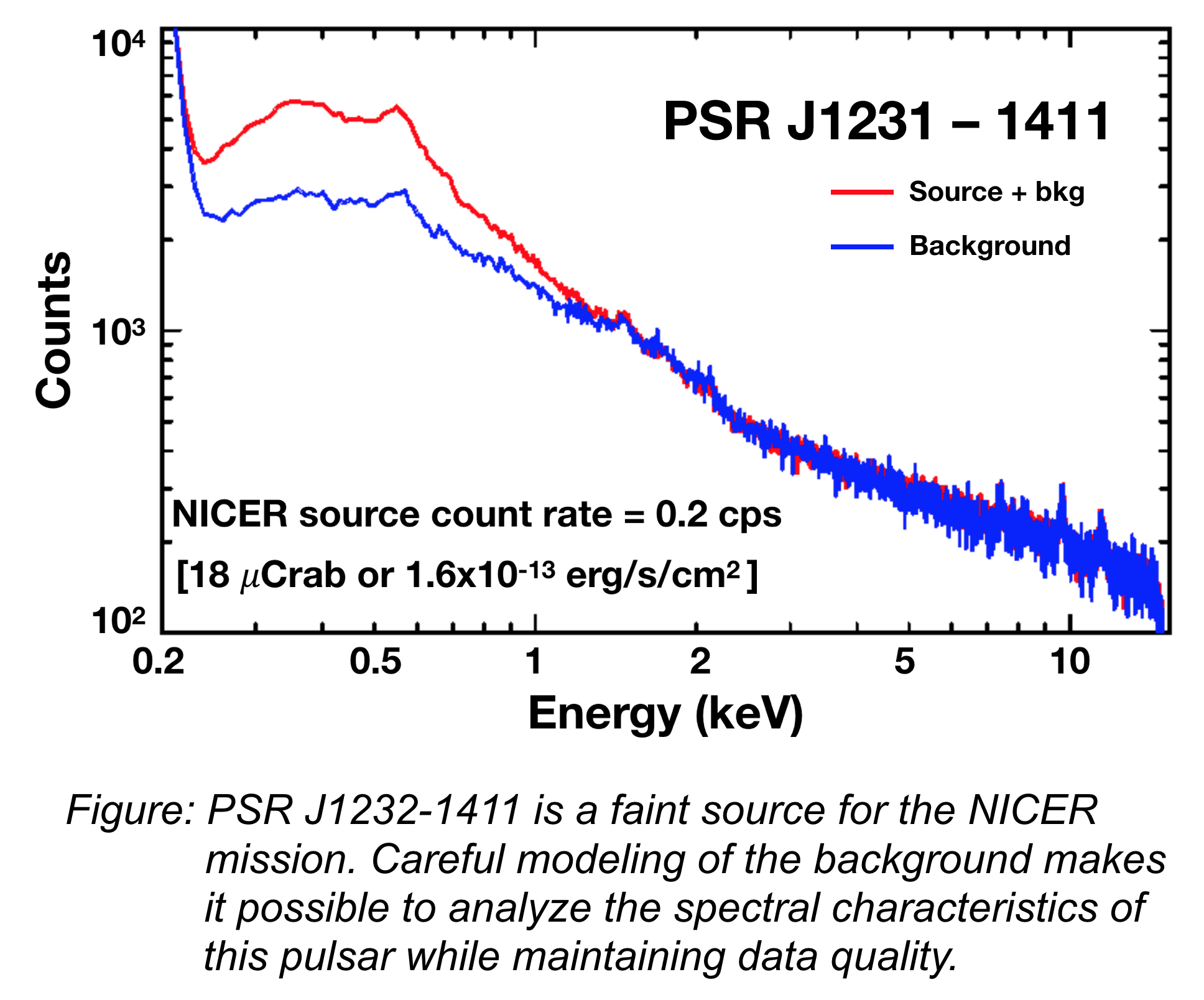NICER Background Estimator ToolsCommand-Line Interface Tools
The ISS orbit takes NICER through a wide range of geomagnetic latitudes – each with its own background characteristics. At high latitudes, the background is dependent on space weather and the variability of the Sun. Individual observations thus have different background levels that must be understood to maximize the science return. To calibrate the background, NICER has to date collected many megaseconds of exposure on background fields used and characterized by RXTE (Jahoda et al. 2006) and also a few select locations near some of NICER's long term and faint MSPs. These data form a database for two different and independently developed background modeling tools. At right is an example of a faint NICER source showing how well these tools capture the shape of the background spectrum. Both of these tools work well and are continuing to be refined. Here we provide alpha releases of both tools. These can be used by Guest Observers in preparing NICER observing proposals, as well as by other NICER users who need suitable background models to use in data analysis. These tools require the user to have an existing HEASoft installation. Please review the associated README files for additional prerequisites. To report issues and bugs, please contact the NICER helpdesk by using the HEASARC Feedback Form. Tool #1: nicer_bkg_estimatorThe nicer_bkg_estimator tool implements the "space weather" method (Gendreau et al., in prep.) which uses environmental data to parse the background database. This tool uses a model of the magnetic cut-off rigidity as well as space weather data in the form of the planetary Kennziffer Index, or Kp index (Bartels et al. 1939). Kp is derived from a worldwide network of magnetometers that publishes data every 3 hours. Kp ranges from 0 to 9, where low values indicate calm space weather, while higher indicate geomagnetic storms. The space weather background tool builds a library of background spectra divided amongst these environmental variables to predict a background spectrum for a given observation that is independent of the X-ray event data collected in the target observation. This package contains functions which can be used to create an estimated NICER background spectrum based on the "environmental" model developed by the NICER Guest Observer Facility. The environmental model uses a combination of the cut-off rigidity (COR_SAX) and the Planetary K index (KP) which gives an estimate of the space weather environment. This model also uses the SUN_ANGLE parameter which helps describe the low-energy background produced by optical loading. Downloads:
Tool #2: nibackgen3C50The nibackgen3C50 tool (Remillard et al.) makes use of a number of background proxies in the NICER data to define the basis states of the background database. These background proxies include graded event data that discriminate some X-ray events landing near the center of each detector from those interacting near the detector edge under a field aperture. Another proxy is high energy X-ray events ("out of band"), which are very unlikely to have been focused by the X-ray mirrors. The tool takes a target observation event list and pulls out the proxy data to build a predicted background spectrum from similarly selected data from the background database. This package was designed to run as a patch on your HEASoft installation. Alternatively, one can run the tool from within an existing HEASoft installation without explicitly installing it.
Revision Information:
Last updated: April 8, 2020 |


